TECHNOLOGICAL ADVANCEMENTS IN MOBILE PHONES (VOL 2)
If you haven't read the first volume, you can do that here. I explained where all these started. From the antenna mobile phones to the smart phones we see or use now, technology just kept surprising us. These technologies were advanced based on humans' needs and wants, we shouldn't be surprised if we see a smart phone that can read a book and explain to us what it just read.
Basically, humans wouldn't want to do anything stressful again. If it is possible, they will pay to achieve that. Well, gradually, scientists are making sure it happens. Gone are those days when you had to write down the numbers you found on your phone and then type it back into the phone to be sent to someone. That was way too stressful, there wasn't a Copy and Paste option then.
You don't need to go to a cyber cafe again for registrations into a program or scanning a document. Many smart phones can do that now. You just need to get the one that suit your needs. I explained little on how these technologies arose on the previous post, I'll be walking you through some furthers details here again.
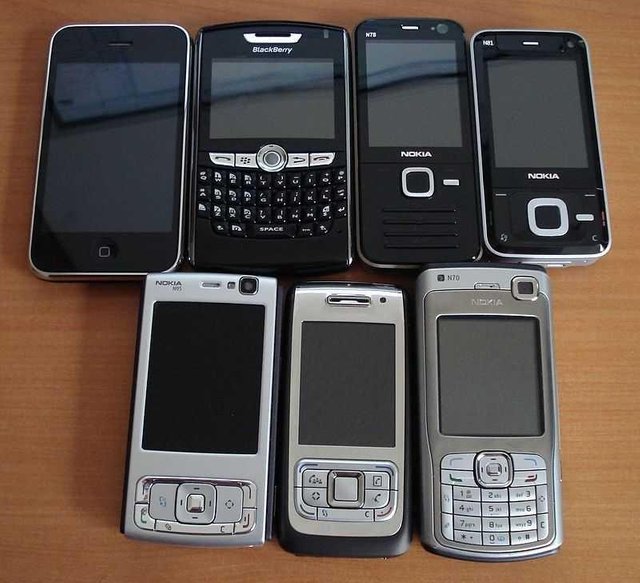
ALT1040 from Blogosfera (2009) CC BY-SA 2.0 in wikimedia commons
Note: These mobile phones advanced in their structures and designs, but that isn't the bone of contention, this article is focused on the phone's performance. Let's take a look at how the mobile phone changed its performance over the years. And that includes what it does, what it's limited to, and what applications it accepts.
The first set of mobile phones.
They weren't called smart phones, probably because they weren't smart enough but these phones were the next best thing then. It solved the issues of communication. Before then, only mails can be sent to your loved ones or any other person that wasn't around you. These phones provided calling abilities, you can speak with your loved ones wherever they are. Again, the call was limited to the range it can travel too.
Simple wireless (1G) networks were run on the phone then and we know it couldn't do much. Still, it was a good tool for communication. Then, the improvements began.
GSM was intoduced.
These weren't called smart phones too, but this was the beginning of smartphone inventions. They could be called pre-smartphones. At this stage, the network was 2G and your mobile phone could send text messages, access the web, download simple applications like music files and ringtones. If you had a GSM then, you will be amazed at the great tool you held on. But, all these are just the beginning of what we use today.
The 2G network used by these phones was limited to how fast data travels and it was solved in the early 2000's.
We welcomed a world of 3G.
This 3G network led to the development of multiple and fast growing apps. More better smart phones were introduced. The network was way too fast and it could send data across without any constraint. Mobile developers had to take full advantage of this, and smart phones came up. The designs were top notch and they gave room for developers to build and run mobile applications in it.
Now, this was where all the innovations started. The developers were probably waiting for a faster network to work with. The smart phones were able to do what the GSM does better and even do what it couldn't do. It didn't stop here.
4G has arrived.
Nowadays, the 3G we called fast isn't fast enough. The 4G network is gradually replacing the 3G and it's bringing new innovations yet again. Access to digital media is now more robust which gave room to more advanced rich mobile applications.
I wouldn't talk much about this, we are currently in the 4G world and we are all seeing what it's bringing or about to bring.
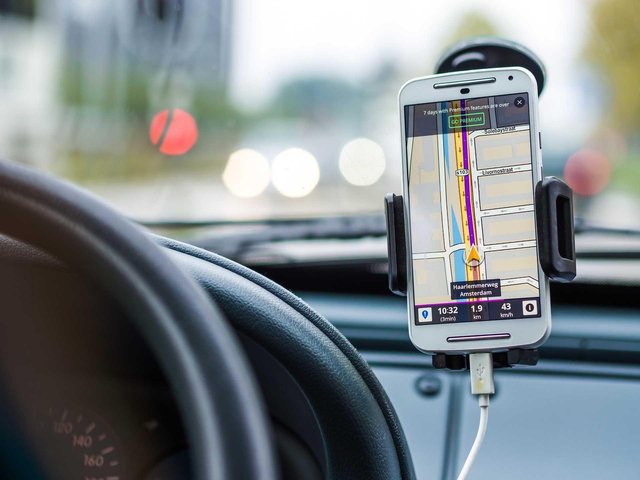
Pixabay
The structures and designs shouldn't be neglected too. The QWERTY keyboard has been replaced successfully. There are some phones having one or two buttons though, but in two years time, we will be kissing buttons goodbye.
The Manta X7 has no single button. To switch it on, the phone will sport a sensor bar on one side allowing you to use your thumb to bring it to life. You can see how amazing that is.
Still on the advancements in mobile phones, I'll be sharing four phones you wouldn't believe its existence as I said in the previous volume. Some of these phones are not available for sale yet. There are still test runs and backups needed to bring it alive.
ZTE ECO MOBIUS.
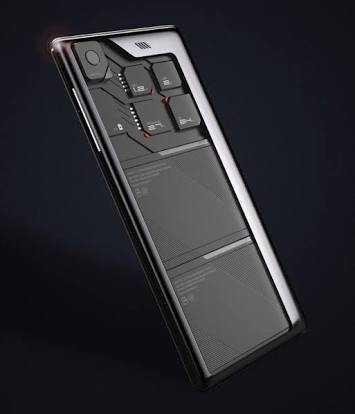
If you don't believe a DYI mobile phone is possible, this has cleared your doubts. Now, you have the chance to upgrade and design your phone to suit your taste. The phone pack comes with a screen, a processor, a camera and an accumulator. These are the mojo. The main part is the screen, it has a magnetic body. Other mojo can be attached to it wherever you want them.
You can as well change the position of the RAM, battery, memory card to give it your own design. It also has a magnetic back cover to cover it all up.
The video below should explain more.
THE DRAS PHONE
If you read the previous volume, you will find out there are foldable phones. Here is one that can be folded to the shape of a doughnut. It can also be folded to whatever phone design you want and can be unfolded to a highly compact standard phone format allowing users to check notifications easily.
I was shocked when I find out it can be folded to a mini-phone that can fit perfectly in a breast pocket.
Here is a truly foldable phone.
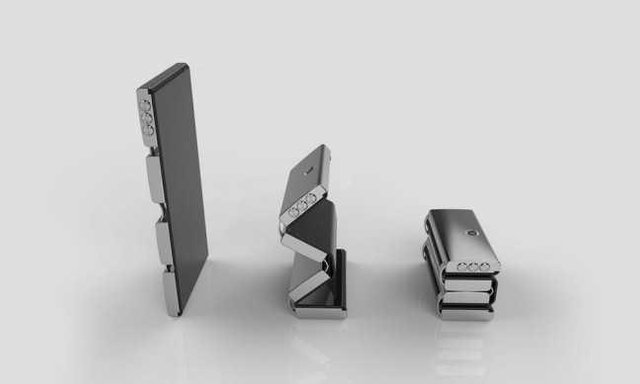
Cool material showcasing the dras phone
LENOVO CPLUS
Here is a brand you might have heard of. it's another bendable phone, when it is unfolded, it looks like a remote control with a huge screen. The Lenovo Cplus can be folded round the wrist as a wrist watch and it will stay on it perfectly. You wouldn't want to risk the screen getting damaged though but that is how bendable it is.
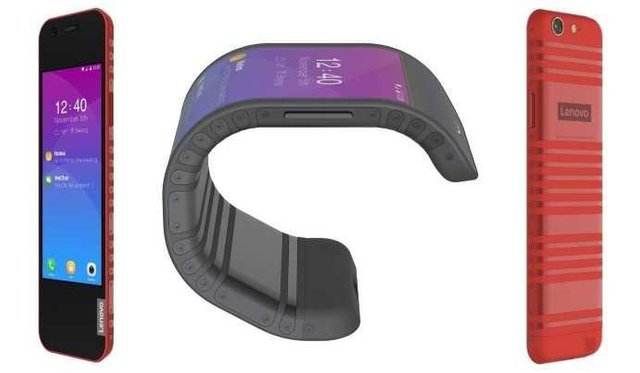
Lenovo Cplus on phonerader
TRIPLE DISPLAY FLIP
This mobile phone works with windows operating system. Just the image alone will give you an insight on why it is called triple display. This isn't the only triple display flip available, I shared one on the previous post. But, this design and capabilities is amazing.
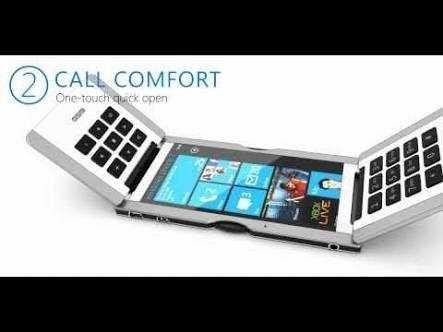
It gives full protection to the screen. The screen can be closed up by the top and bottom flip. A little bit of screen is left to show you notifications. You might want to see who called you, who sent you a text or the number of unread messages you have on WhatsApp or other messaging applications. When you press the left or right button at the top and button of the screen, the screen opens up causing a triple flip.
The screen can also be turned around in a position you want. It has a keyboard you might want to use instead. The video below should tell you more about this triple flip.
We shouldn't be surprised at what technology can offer, we haven't seen it all yet. This is just the beginning! If you love tech as much as I do and you find this post awesome, don't forget to click the upvote button and share it with friends.
Nice pitched article on technology advancement in mobile phones.
Wow! This is so informative
Thanks to technology communication has been made easier
Congratulations! This post has been upvoted from the communal account, @minnowsupport, by afolwalex from the Minnow Support Project. It's a witness project run by aggroed, ausbitbank, teamsteem, theprophet0, someguy123, neoxian, followbtcnews, and netuoso. The goal is to help Steemit grow by supporting Minnows. Please find us at the Peace, Abundance, and Liberty Network (PALnet) Discord Channel. It's a completely public and open space to all members of the Steemit community who voluntarily choose to be there.
If you would like to delegate to the Minnow Support Project you can do so by clicking on the following links: 50SP, 100SP, 250SP, 500SP, 1000SP, 5000SP.
Be sure to leave at least 50SP undelegated on your account.